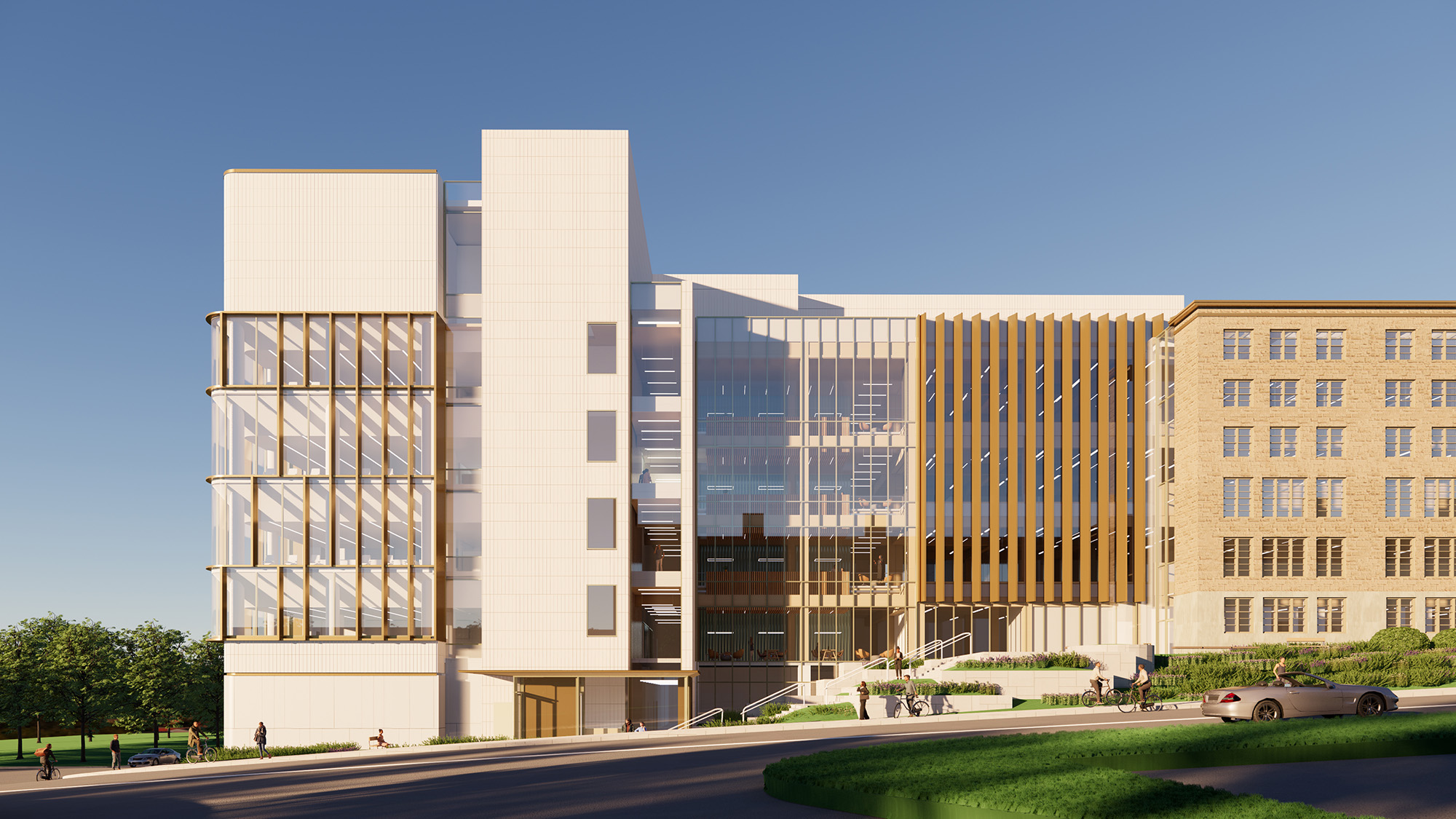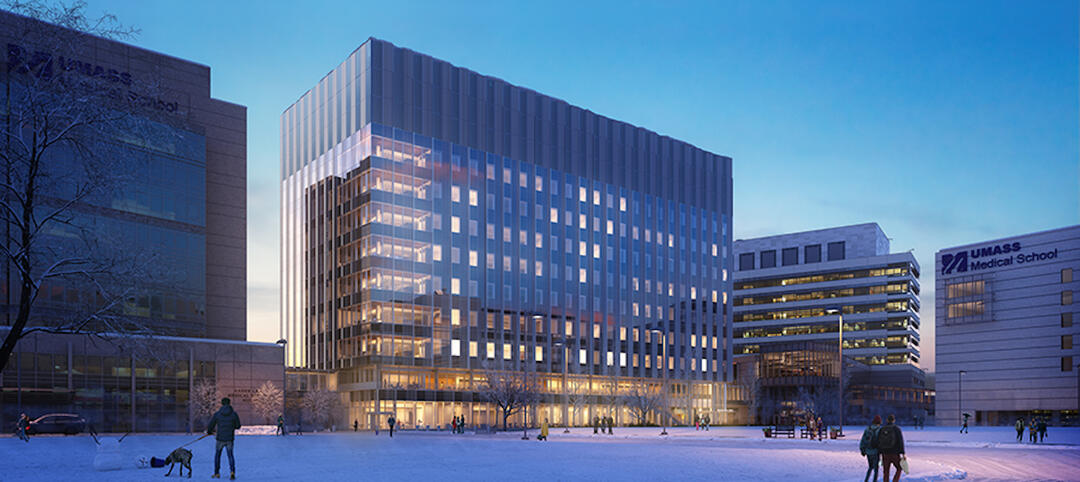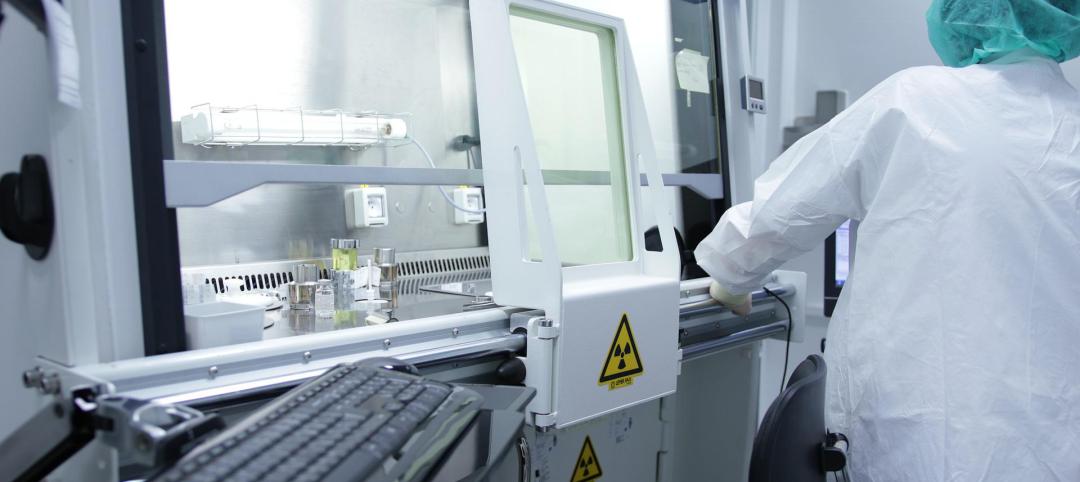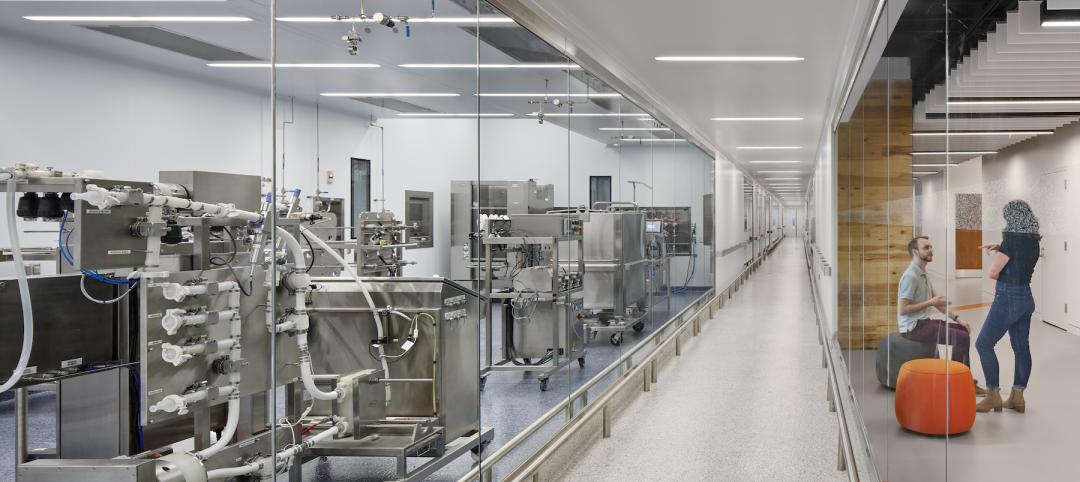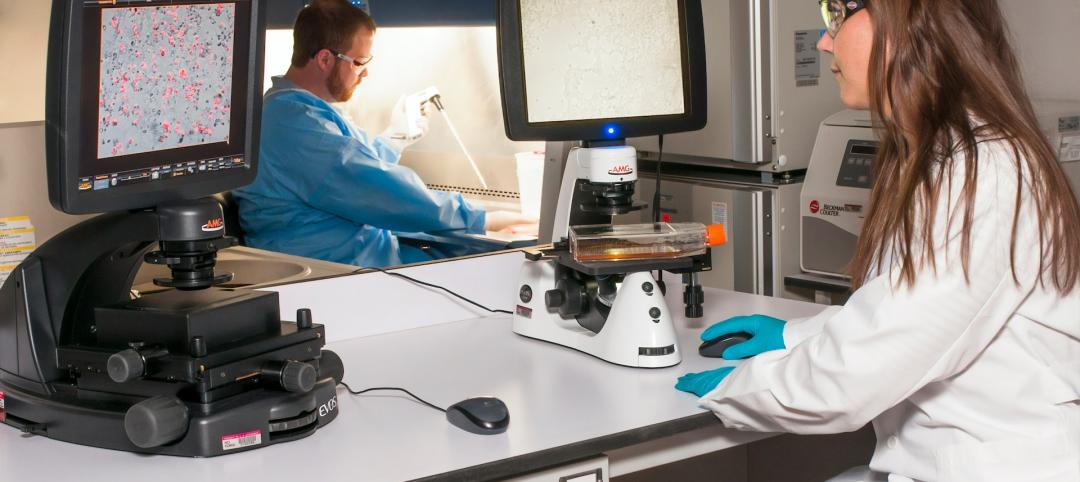Construction on the Atlantic Science Enterprise Centre (ASEC) has begun. Designed by Diamond Schmitt, in association with EXP, the new ASEC facility will provide federal scientists and partners with state-of-the-art space and equipment to collaborate on research opportunities, understand, protect and sustain Atlantic freshwater and coastal ecosystems in Canada. The design of the new building will reflect the heritage of the site, while establishing an open and inclusive environment that makes aquatic science more accessible.
The new ASEC will occupy the former home of the Collège Notre-Dame-d’Acadie which was originally founded and run by the Sisters of Notre-Dame-du-Sacré-Coeur. Opening in 1949, it was the first institution of higher education for Acadian women. The building was purchased by the Government of Canada in 1982 and reopened in 1985 as the Gulf Fisheries Centre.
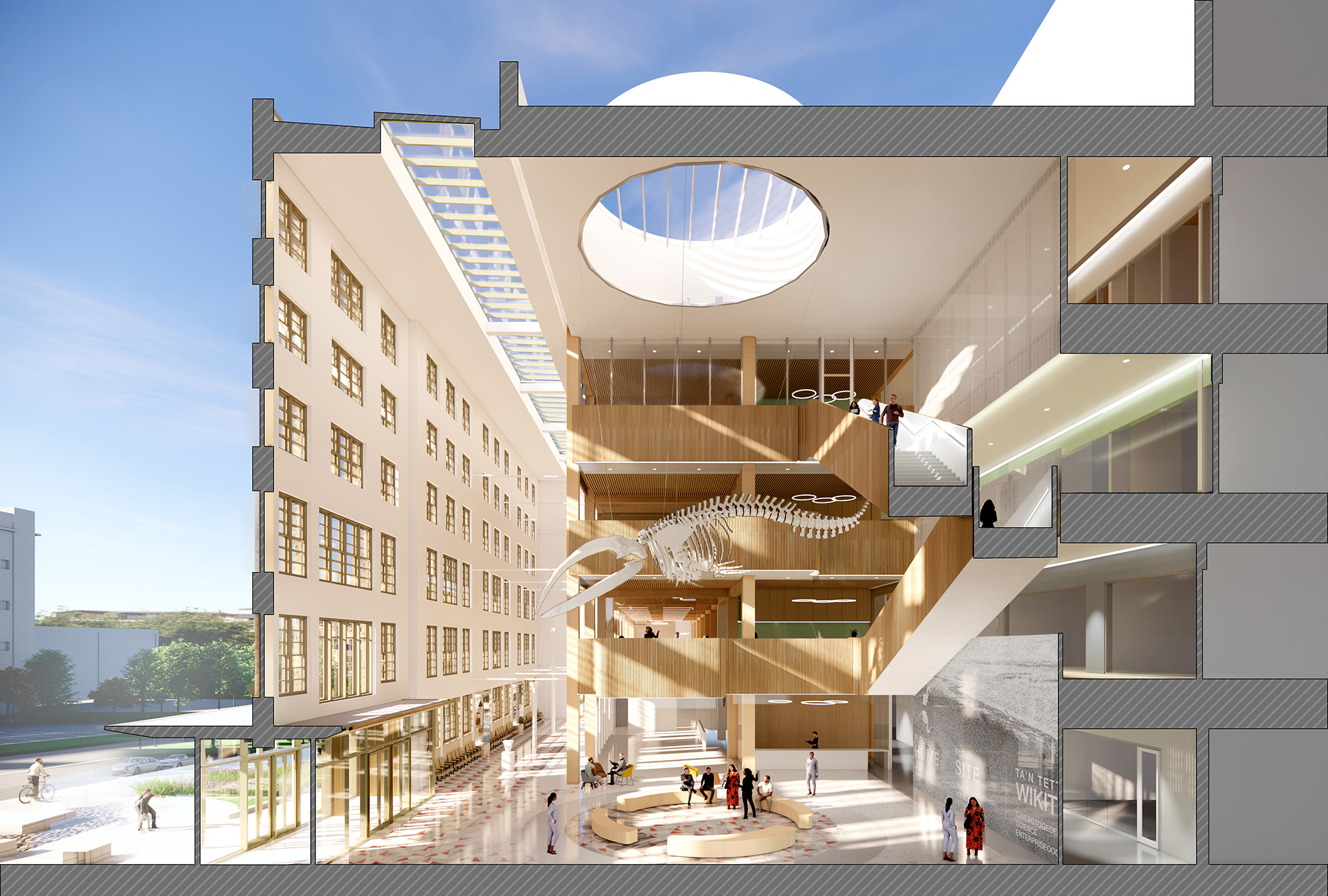
Through consultation with the Sisters, the prominence of the Collège’s main west heritage façade will be retained and serve as a principal element in Diamond Schmitt’s scheme. It will be centrally positioned and anchor the new facility, with the existing main entrance remaining as the principal entry point. The design will interpret the building’s historical pavilion character and strive to commemorate its origins by integrating and adapting key elements and spaces into the site’s now expanded program.
Atlantic Science Enterprise Centre (ASEC) design
Visitors and staff alike will be welcomed into the building through a full-height, four-storey Atrium and skylit Galleria which will serve as an exhibition space to commemorate the Sisters, provide a place for science on display, recognize Indigenous communities, and serve as a place for gathering. The Atrium and Galleria will act as the connective tissue between the building’s different programming components, while also establishing the importance of the public realm which includes a flexible multipurpose room, Mawiomi—an Indigenous Gathering space, informal and formal meeting spaces of varying sizes.
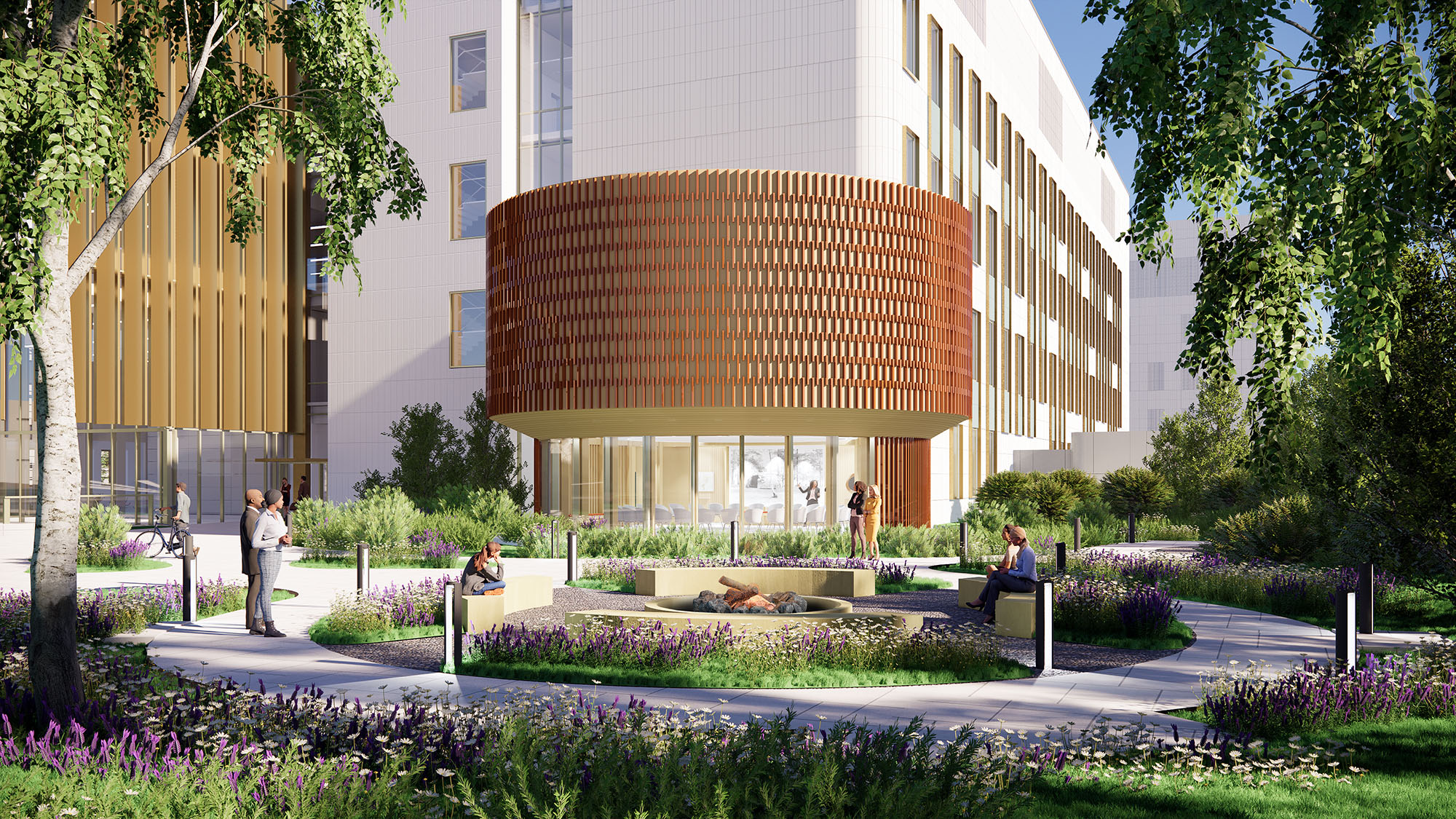

The net-zero carbon facility will allow the scientific work it will host to be advanced in an energy efficient and sustainable manner. Science areas will be organized around the creation of neighborhoods that group similar types of investigation together, encouraging the sharing of resources and equipment. This plan creates synergies between those groups, while also providing opportunities to foster cross-disciplinary collaborations. Laboratory space will be well lit with daylight and views, be universally accessible and adapt easily to the daily and future needs of occupants as their research evolves.
A key objective of the ASEC project is to establish new partnerships with First Nations and Indigenous groups through extensive engagement and visioning sessions. Led by Mi’kmaq Elder Noel Millea, Indigenous consultation will seek to create a welcoming space for Indigenous employees and visitors alike, and offer an inclusive environment where Indigenous ceremonies, storytelling, meetings, and cultural training can take place. Indigenous ways of knowing and being will inform the building’s design in a number of ways.
Large open spaces, flooded with natural light will offer places of gathering, spaces for learning and collaboration, and talking circles.The use of wood and glazing will provide a sense of warmth and belonging and open up the facility towards the outdoors, creating connections with the natural surroundings. Visual representations of Mi’kmaq, Wolastoqiyik and Passamaquoddy culture will be found throughout the new facility and its landscape.

The goal of the overall planning and design approach of the new Atlantic Science Enterprise Center is to create a collaborative work environment not only within the laboratories, but with the Department of Fisheries and Oceans headquarters and open partner office areas. This extends into the social spaces where collaborative zones are clustered around the atrium, connecting the floors both physically and visually, and on all levels, bringing together the various partners sharing the facility.
The Atlantic Science Enterprise Centre is being built in three phases to allow for the continued use of the existing building during construction. The site preparation work is currently underway as part of the first phase. The construction of the new science wing to the north of the existing building will begin in 2024.
When it is fully occupied in 2031, the Atlantic Science Enterprise Centre will serve over 700 employees from four federal organizations, including Fisheries and Oceans Canada, Environment and Climate Change Canada, the Canadian Food Inspection Agency and the National Research Council Canada. The Canadian Space Agency will participate in ASEC as a virtual partner.
Related Stories
School Construction | Oct 31, 2022
Claremont McKenna College science center will foster integrated disciplinary research
The design of the Robert Day Sciences Center at Claremont McKenna College will support “a powerful, multi-disciplinary, computational approach to the grand socio-scientific challenges and opportunities of our time—gene, brain, and climate,” says Hiram E. Chodosh, college president.
Higher Education | Oct 24, 2022
Wellesley College science complex modernizes facility while preserving architectural heritage
A recently completed expansion and renovation of Wellesley College’s science complex yielded a modernized structure for 21st century STEM education while preserving important historical features.
Laboratories | Oct 5, 2022
Bigger is better for a maturing life sciences sector
CRB's latest report predicts more diversification and vertical integration in research and production.
Laboratories | Sep 12, 2022
Lab space scarcity propels construction demand in life sciences sector
In its 2021 Life Sciences Real Estate Outlook, JLL predicted that access to talent would be a primary concern for an industry sector that had been growing by leaps and bounds. A year later, talent still guides real estate decisions. But market conditions of a different sort were cooling the biotech field: namely, investors that have soured on startups which underperformed after going public. What this means for new construction and renovation going forward is unpredictable, as the drivers behind life sciences’ surge are still palpable.
| Sep 2, 2022
New UMass Medical School building enables expanded medical class sizes, research labs
A new nine-story, 350,000 sf biomedical research and education facility under construction at the University of Massachusetts Chan Medical School in Worcester, Mass., will accommodate larger class sizes and extensive lab space.
Giants 400 | Aug 22, 2022
Top 70 Science + Technology Facility Contractors + CM Firms 2022
Whiting-Turner, Hensel Phelps, DPR Construction, and Skanska USA top the rankings of the nation's largest science and technology (S+T) facility contractors and construction management (CM) firms, as reported in Building Design+Construction's 2022 Giants 400 Report.
Giants 400 | Aug 22, 2022
Top 70 Science + Technology Facility Engineering + EA Firms 2022
Jacobs, CRB, Fluor, and Affiliated Engineers Inc. head the rankings of the nation's largest science and technology (S+T) facility engineering and engineering/architecture (EA) firms, as reported in Building Design+Construction's 2022 Giants 400 Report.
Giants 400 | Aug 22, 2022
Top 100 Science + Technology Facility Architecture + AE Firms 2022
HDR, Flad Architects, Gensler, and DGA top the rankings of the nation's largest science and technology (S+T) facility architecture and architecture/engineering (AE) firms, as reported in Building Design+Construction's 2022 Giants 400 Report.
Giants 400 | Aug 22, 2022
Top 45 Laboratory Facility Contractors and Construction Management Firms for 2022
Whiting-Turner, Hensel Phelps, McCarthy, and STO Building Group top the ranking of the nation's largest science and technology (S+T) laboratory facility contractors and construction management (CM) firms, as reported in Building Design+Construction's 2022 Giants 400 Report.
Giants 400 | Aug 22, 2022
Top 55 Laboratory Facility Engineering + EA Firms for 2022
Jacobs, Affiliated Engineers Inc., Burns & McDonnell, and WSP top the ranking of the nation's largest science and technology (S+T) laboratory facility engineering and engineering/architecture (EA) firms, as reported in Building Design+Construction's 2022 Giants 400 Report.


